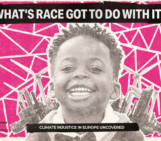
Just like me, you may have, at some point in your life, come across Malthusian rhetoric: There are too many mouths to feed and not enough resources for a growing population. But what if the problem isn’t people, but an appetite for profit-driven extraction? In this blog, I peel back the myth of overpopulation and show how pinning ecological collapse on mere population numbers diverts attention from the real culprits: hyper-inequality and extractive industries. Drawing on academic studies and recent reports, we’ll trace the Malthusian narrative from its 18th-century origins through today’s climate discourse, and reframe the crisis around structural over-consumption and resource plunder; not human reproduction.
Debunking Malthus: Myth, history and modern pop panic
Thomas Malthus’s 1798 Essay on the Principle of Population famously argued that unchecked population would always outpace food supplies. That pessimistic vision was inspiration for a range of ideas from Darwin’s theory of natural selection to eugenic social policies. While good science has largely debunked Malthus’ arithmetic (food production has grown faster than population for two centuries), echoes of his logic persist. In modern climate debates, it’s common to hear comments like “have fewer babies to save the planet” or to see headlines lamenting the addition of the 8-billionth person. Yet these arguments ignore how and where resources are used. For example, statistics show that the average American emits as much carbon in one year as 250 Ethiopians do in the same period. In fact, as Michael Shermer points out, “the wealthiest nations with the greatest food security have the lowest fertility rates, whereas the most food-insecure countries have the highest fertility rates”.
Despite this, calls to limit births have recently resurfaced under the climate banner. Some bioethicists and even a few climate scholars now argue that having more than one child is ‘irresponsible’ in a warming world, but framing the crisis as a population problem is misleading. It falsely implies that ‘poor’ people having children are to blame for climate chaos, when in reality, the per-capita footprint varies enormously across the globe.
The real crisis: Overproduction, overconsumption, and inequality
Far from being driven by population size, environmental collapse tracks wealth and power. A tiny minority of people cause the lion’s share of the damage. Oxfam reports that the richest 1% of humanity now produce as much carbon as the poorest two-thirds combined. Likewise, the top 10% of emitters account for half of all global CO₂, according to Oxfam’s 2023 data. In other words, a few billionaires and industrialists spew as much pollution as billions of ordinary people. These disparities are starkly illustrated by per-capita figures: people in high-income countries emit, on average, dozens of times more CO₂ than those in low-income countries. For instance, it takes only five days for an average Briton to emit the amount of CO₂ that an average Rwandan emits in an entire year.
This inequality extends beyond carbon. The richest countries consume far more resources per person than poorer nations. One study finds that a North American consumes about 90 kg of resources per day, while the average African uses only ~10 kg. These patterns are exacerbated by industrial modes of production: sprawling feedlots for beef, vast soybean and palm oil plantations, and high-input monocultures consume huge tracts of land, displace forests, and pollute water. The UN’s Food and Agriculture Organisation (FAO) reports that agricultural expansion causes nearly 90% of deforestation worldwide: over half of forest loss is due to converting land to crops, and almost 40% to livestock pasture. Mineral extraction and fossil-fuel drilling also scar landscapes at a pace that dwarfs population growth. For instance, burning coal, oil and gas for energy still accounts for over 75% of global greenhouse gases, and open-pit mines and drilling sites gouge mountains and forests to feed insatiable industrial demand.
By contrast, many densely populated regions have learned to live with lighter footprints through careful stewardship. On lands managed by Indigenous peoples, biodiversity thrives more often than not: one study found that birds, mammals, amphibians and reptiles are more numerous on Indigenous-managed lands than anywhere else. Likewise, intensive agroecological practices (like rice-fish farming in Asia or permaculture in Latin America) have shown that it’s possible to feed people efficiently without bulldozing ecosystems.
The lesson is clear: environmental harm is not proportional to population, but to how we produce and consume.
The perils of population panic: Ecofascism and green colonialism
Blaming the many for the sins of the few has dark political implications. Malthusian logic often morphs into what scholars call eco-fascism or green colonialism. By framing poverty and high fertility in postcolonial countries as an environmental scourge, elites can justify repressive solutions. History is littered with examples: the same Malthusian arguments used to restrict aid to famine victims in 1840s Ireland were later invoked to sterilize women of color and the poor in the 20th century.
This kind of rhetoric is insidious as it creates climate anxiety and guilt in poor communities (and even among the “overpopulated” themselves) while obscuring the role of fossil-fuel corporations and luxury lifestyles (think of your favourite celebrity’s private jet!). In reality, the structures of capitalism and colonialism—not sheer population—drive the crisis. Vandana Shiva sharply criticizes this trend: “Squeezing the lives of people is now being proposed as the saviour of the planet,” she writes, as capitalist “green economy” schemes rush to “technologise, financialise, privatise and commodify all of the earth’s resources and living processes.” In short, the Malthusian diversion is not just wrong—it’s dangerous, because it underwrites policies that punish the powerless and let the powerful off the hook.
Alternatives: Justice, degrowth, and regeneration
If the problem isn’t over-population, how do we use this understanding to progress towards a more balanced and sustainable future? Firstly, the weathly world would need to take an honest look at its consumption, and take responsibility for reducing that. Economists and justice advocates suggest degrowth in wealthy nations: an equitable downscaling of production and resource use that prioritizes well-being over GDP growth. In fact, many degrowth scholars argue that shrinking the global economy (especially its carbon-intensive sectors) is essential for climate justice since current economic systems concentrate wealth and pollution. Such a shift would go hand-in-hand with redistribution: progressive carbon taxes on luxury consumption and extreme wealth could sharply reduce emissions and fund green transitions. Oxfam finds that a 60% tax on the richest 1% of incomes would cut emissions by more than the entire UK’s output and raise $6.4 trillion annually for renewables and social programs.
A key second step would be to return control over resources to local and Indigenous communities.“We share this planet, our home, with millions of species,” Vandana Shiva reminds us. “Justice and sustainability both demand that we do not use more resources than we need.” Policies that strengthen community sovereignty over land and water rather than handing decisions to faraway corporations or technocrats tend to conserve more nature and serve local needs. For example, food sovereignty movements show that supporting small-scale farmers and agroecological techniques can restore soils and increase resilience, without sacrificing yield. Research in agronomy shows the importance of practices like cover-cropping, crop rotations, and minimal tillage rebuild fertility and sequester carbon in soils.
Finally, we must transform our energy and production systems. Continuing to phase out fossil fuels is critical, combined with a halt to deforestation and robust plans to regenerate degraded land. Fortunately, many countries have shown it’s possible to grow agricultural output and reduce deforestation simultaneously. By cutting waste, ending predatory land-use practices, and switching to sustainable diets and farming methods, we can feed more people, smarter.
Time to change the system, not the people
It’s time to refocus the conversation. Rather than fretting over headcounts, we can hold corporations and governments accountable for extraction and inequality. This could see initiatives like an end to fossil fuel subsidies, a global wealth tax, and new energy projects which incorporate Indigenous land rights, by supporting agroecology and local food economies that empower communities. And when you hear talk of “overpopulation” as the climate solution, push back with data and history.
Like Shermer said: “The solution to overpopulation is not to force people to have fewer children … It is to raise the poorest nations out of poverty through democratic governance, … and the education and economic empowerment of women.”
On World Population Day and beyond, it’s time to change the narrative. It’s not the number of people that’s the issue, it’s the systems we uphold. By redirecting blame away from vulnerable communities and toward the hyper-extractive economies that actually devour resources, we can, perhaps, start paving a path toward a fairer, sustainable future for everyone.




